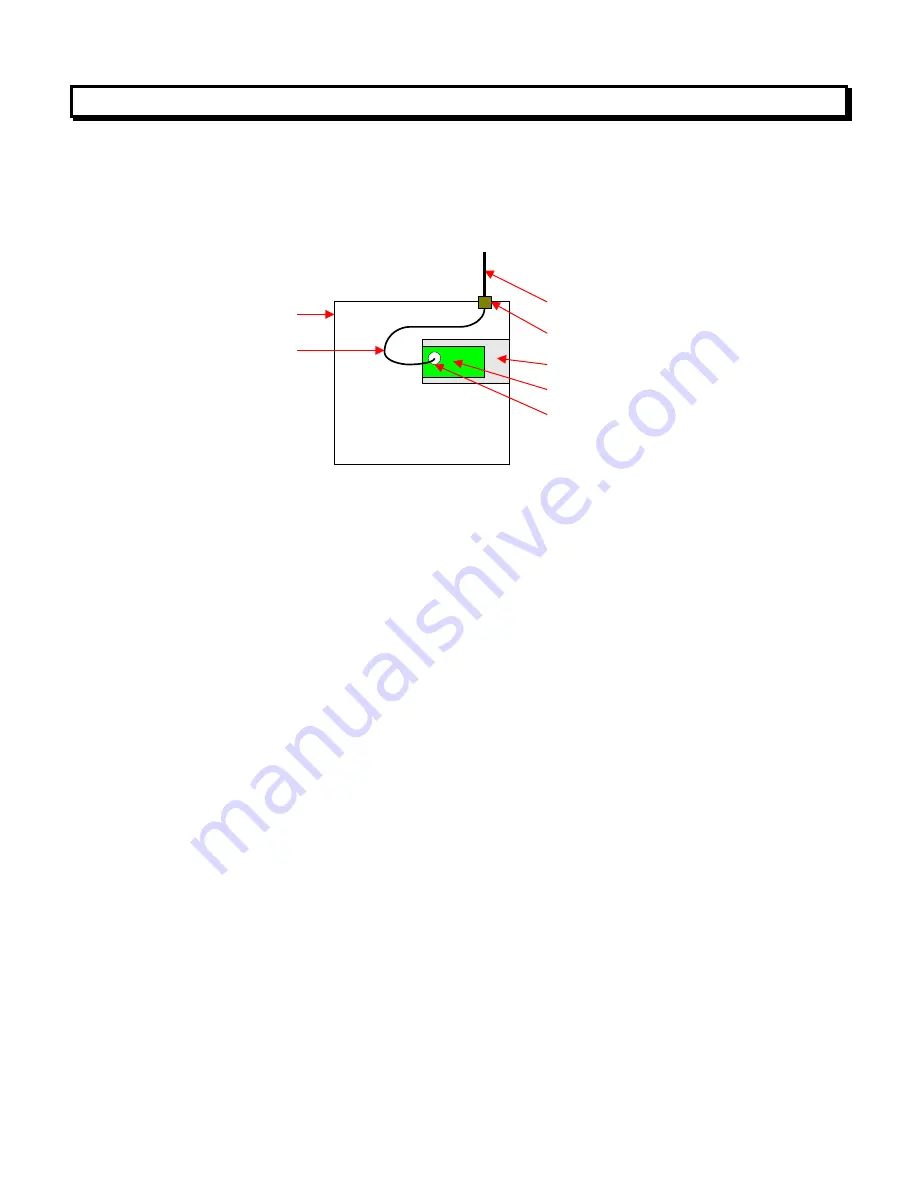
- 5 -
4. METER INSTALLATION & RANGE CONSIDERATIONS
A meter with an LWIFI board,
which has an integral antenna, needs to be mounted
on a benchtop or in a plastic enclosure that is transparent to radio waves. It is ideal
for communication distances of 30 m (100 ft) or less. The presence of nearby circuit
board traces reduces power radiated by LWIFI by about 10 dB compared LWIFIX.
Male U.FL right-angle connector
Laureate digital panel meter
Omnidirectional antenna, 2.4 GHz
2.4 GHz LWIFX board
RP-SMA feedthrough
Metal electronics cabinet
Antenna cable assy,
760 mm (30)"
A meter with an LWIFIX board,
which comes with an external antenna and a 760
mm (30
”) long antenna cable, can be mounted inside a metal cabinet that blocks radio
waves. The antenna should be vertical and be mounted on the top surface of the
cabinet, which will then act as the antenna
’s ground plane and help shape an antenna
pattern, which is omnidirectional in the horizontal plane. The antenna gain in the
horizontal direction is 5 dBi. Also consider using LWFIX, as opposed to LWIFI, since it
has about 10 dB higher output.
WiFi range
depend on many factors, which include the radiated power and sensiti-
vities not only of the WiFi board but also of the WiFi router. Received radio power on
either end is increased by the sum of gains in dB of both antennas. It is decreased by
loss in dB of the antenna cable inside the cabinet and most significantly by loss in dB
along the radio path. Every -3 dB reduces power by a factor of 2. Every -10 dB
reduces power by a factor of 10.
WiFi range
can be 90 m (300 ft) with an antenna and an unobstructed line-of-sight
connection outdoors, but it is half of that or less indoors. Substantial signal loss is
caused by materials like concrete, bricks or plaster that absorb radio waves, and by
nearby metal objects that reflect and scatter radio waves. To maximize range, mini-
mize any obstructions between the WiFi router and meter antennas, and maximize
antenna heights. If possible, place the WiFi router in a raised, central location to elimi-
nate WiFi dead zones. WiFi range is also reduced by interference from competing 2.4
GHz signals from other WiFi networks, IoT devices, and products like microwave
ovens.
Содержание LWFIX
Страница 10: ...10...
Страница 28: ...28...
Страница 30: ...30 The diagram below describes how each of the bits is interpreted...
Страница 31: ...31 You may wish to use the Windows calculator to convert two s complement values to decimal and vice versa...






































